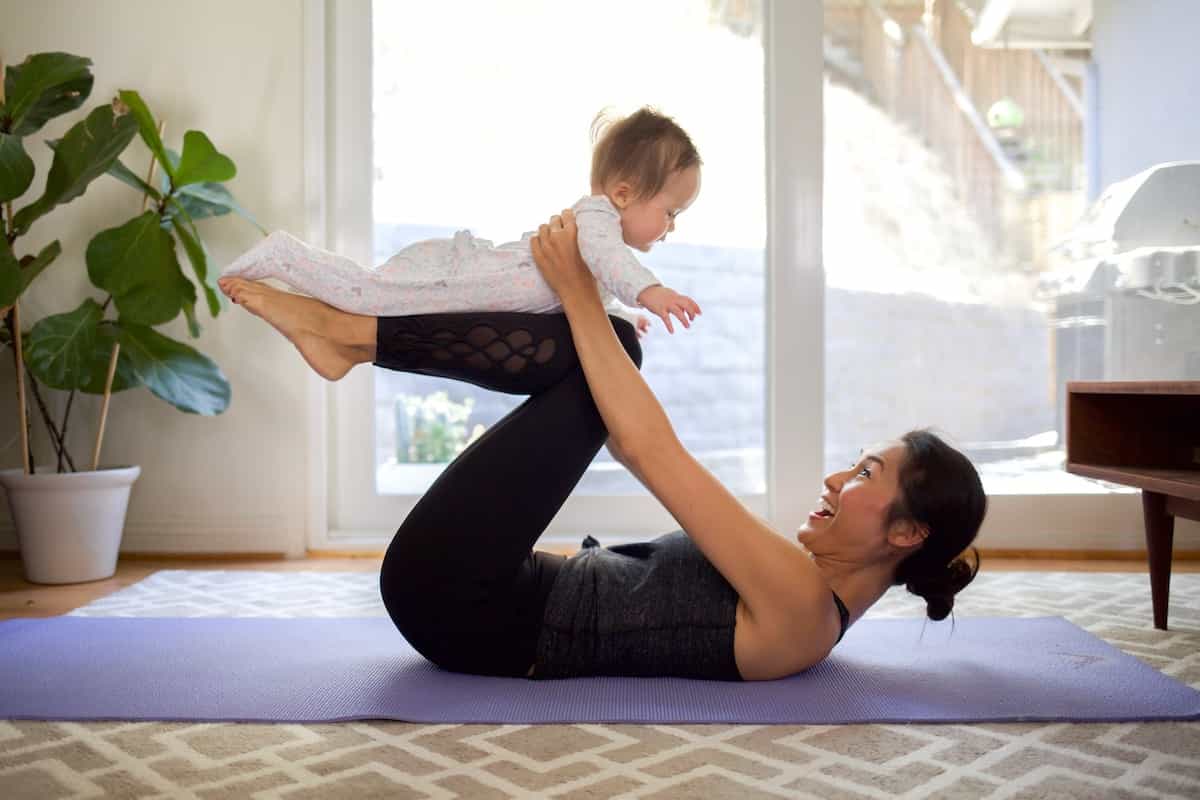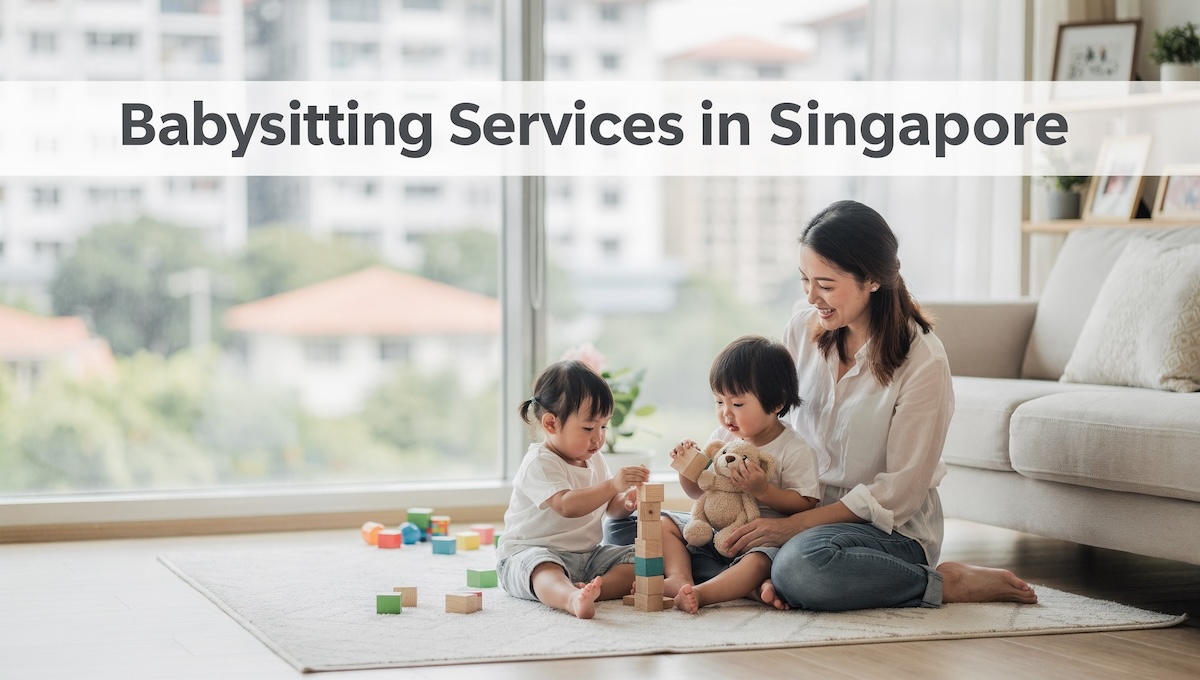Congratulations, new mom! Welcoming a new life into the world is an amazing experience. Still, it can also leave you feeling physically and emotionally drained. So if you’re looking for a safe and gentle way to rebuild your strength, relieve stress, and bond with your baby, postnatal yoga could be just what you need.
In this article, we’ll explore the many benefits of postnatal yoga, from improving flexibility and balance to promoting relaxation and reducing anxiety. We’ll also provide helpful tips and yoga poses to get you started on your postnatal yoga journey.
So if you’re ready to nourish your body and mind as a new mom, read on!
What Is Postnatal Yoga
Postnatal yoga allows new mothers to explore healthy ways of calming and relieving stress. It’s specifically designed for new mothers who have recently given birth. It involves a series of gentle yoga poses and safe and beneficial movements for the postpartum body.
The postpartum period is a physical and emotional transition for new mothers. Postnatal yoga can help support their healing and recovery. It can also help new mothers manage the physical and emotional demands of caring for a newborn, such as sleep deprivation and stress.
Postnatal yoga typically focuses on building core strength, improving posture, and releasing neck, shoulder, and back tension. It may also include breathing exercises and meditation techniques to help new mothers relax and reduce stress.
However, new mothers should remember that they should only practice postnatal yoga under the guidance of a qualified instructor trained to work with postpartum women. New mothers should also consult their healthcare provider before starting any new exercise program.
For pregnant women, you can consider prenatal yoga instead.
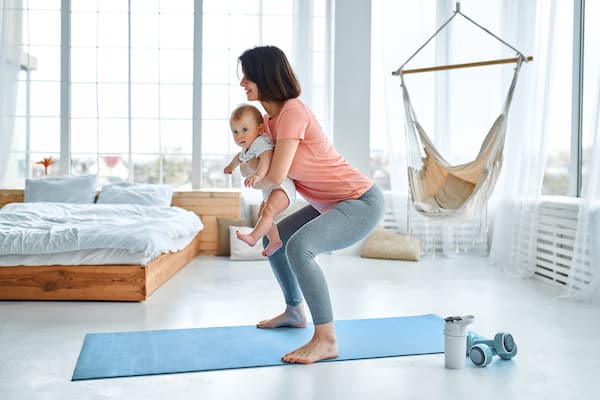
How Does Yoga Help Postpartum?
Yoga can provide numerous benefits for postpartum women, both physically and emotionally. Here are some ways yoga can help postpartum:
- Strengthens core muscles: Yoga poses can help new mothers regain strength in their core muscles, including the pelvic floor and abdominal muscles, which can weaken during pregnancy and childbirth.
- Relieves physical tension: Yoga can help release tension in the shoulders, neck, and back, which are common areas of tightness for new mothers due to breastfeeding, carrying their baby, and lack of sleep.
- Improves posture: Poor posture is typical for new mothers, especially when breastfeeding. Yoga can help improve posture by strengthening the back muscles and opening the chest.
- Reduces stress and anxiety: Yoga, breathing exercises and meditation can help reduce stress and anxiety levels, which can be high postpartum.
- Providing emotional support: Postnatal yoga classes can offer a supportive environment where new mothers can connect with others going through a similar experience and share their challenges and successes.
- Boosts energy: Yoga poses and breathing techniques can help boost energy levels, which can be helpful for new mothers who are dealing with sleep deprivation and fatigue.
Overall, yoga can be an effective tool for postpartum women looking to rebuild their strength, alleviate physical tension, and improve their emotional well-being.
Can Yoga Reduce Postpartum Belly?
While yoga alone may not necessarily reduce the postpartum belly, it can help strengthen the abdominal muscles and tone the belly over time. The abdominal muscles are often weakened during pregnancy and childbirth, leading to a “mommy pooch” or diastasis recti, where the muscles separate.
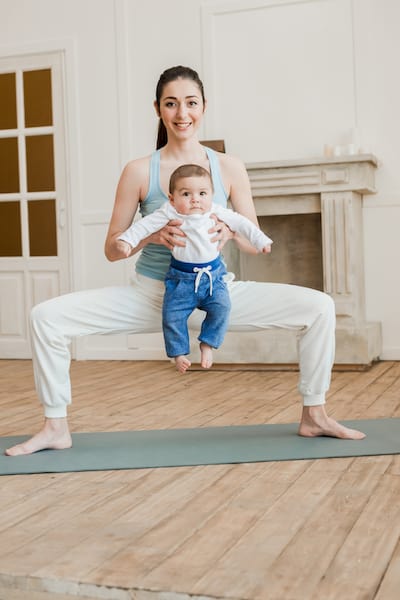
Yoga can help address this by incorporating poses that target the abdominal muscles, such as the plank, boat pose, and chaturanga. These poses can help strengthen the core muscles, improve posture, and tone the belly muscles.
It’s important to note, however, that reducing the postpartum belly also depends on other factors, such as a healthy diet, regular exercise, and adequate rest. It’s also essential to give the body time to heal after childbirth and not put too much pressure on yourself to “bounce back” too quickly.
Ideally, you should receive the go-ahead from your healthcare provider before starting any postpartum exercise routine, including yoga.
When To Start Postnatal Yoga?
The timing of when to start postnatal yoga can vary depending on the individual and their specific postpartum recovery. Generally, you should wait until your healthcare provider has cleared them to resume physical activity, typically around six weeks after a vaginal delivery and eight weeks after a cesarean birth.
Once cleared by their healthcare provider, new mothers can start with gentle yoga poses and movements, gradually increasing intensity and duration as their body feels ready. However, it is essential to listen to your body and not push yourself too hard too soon, as the postpartum period is a time of healing and recovery.
Choosing a postnatal yoga class or instructor trained to work with postpartum women is also essential. They can modify and adjust the poses and movements to ensure they are safe and appropriate for the postpartum body.

Postpartum Yoga For Beginners
With an emphasis on deep relaxation, these classes also allow moms to nurture themselves after giving birth.
If you’re a beginner looking to try postpartum yoga, here are some tips to help you get started:
- Wait until you’ve received the go-ahead from your healthcare provider before starting any postpartum exercise routine, including yoga.
- Look for a postnatal yoga class designed for new mothers, or seek a yoga teacher with experience working with postpartum women.
- Start with gentle yoga poses focusing on stretching and relaxation, such as cat-cow, child’s pose, and gentle twists.
- Incorporate pelvic floor exercises, such as Kegels, into your yoga practice to help strengthen these muscles.
- Focus on your breath and use deep breathing techniques to help calm your mind and reduce stress.
- Be gentle with yourself and listen to your body. Don’t push yourself too hard; modify poses to accommodate physical limitations or discomfort.
- If you’re practising at home, consider using props such as blankets, bolsters, or blocks to help support your body and make poses more comfortable.
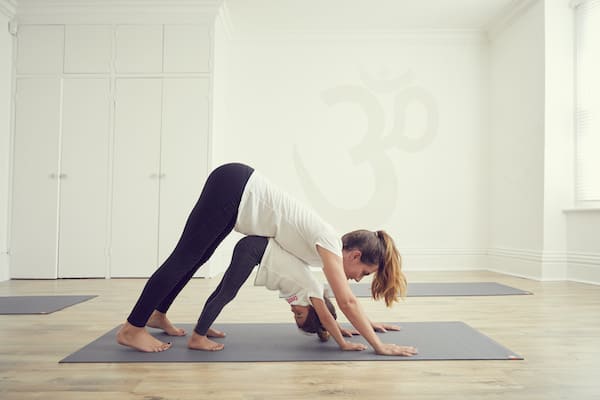
Remember that postpartum yoga is a journey; you must be patient with yourself as you rebuild strength and flexibility. However, with regular practice and the guidance of a knowledgeable yoga teacher, you can gradually build your routine and enjoy the many benefits that yoga can offer postpartum women.
Postpartum Yoga Videos
If you’d like to try on your own, here are some Youtube videos to get you started.
Postpartum Yoga Poses To Avoid
While yoga can benefit postpartum women, avoiding certain poses that can strain or injure the body, particularly if you’ve had a cesarean section, is essential. Here is some postpartum yoga poses to avoid:
- Deep twists: Avoid deep twists that compress the abdomen, as these can be uncomfortable or even painful if you’ve had a cesarean section. Gentle twists, such as seated spinal twists, may be okay.
- High-intensity poses: Avoid high-intensity poses that put too much strain on the body, such as arm balances or inversions, until you’ve regained strength and stability in your core and pelvic floor muscles.
- Backbends: Avoid deep backbends that pressure the abdomen and pelvic floor muscles. Instead, opt for gentle backbends that focus on stretching the chest and shoulders.
- Jumping or bouncing: Avoid jumping or bouncing movements, as these can strain the pelvic floor muscles and exacerbate any existing pelvic floor issues.
- Deep forward folds: Avoid deep forward folds that compress the abdomen or stretch the hamstrings too deeply. Instead, focus on gentle forward folds that stretch the lower back and release tension.
Remember that every woman’s postpartum recovery is different, so listening to your body and modifying poses to accommodate any physical limitations or discomfort is essential. It’s always a good idea to consult your healthcare provider before starting a postpartum yoga practice, particularly if you’ve had any complications during pregnancy or childbirth.
Postnatal Yoga With Baby
Postnatal yoga with your baby can be a fun and bonding experience while providing benefits for you and your little one. Here are some tips for practising postnatal yoga with your baby:
- Choose a safe and comfortable space: Find a quiet space in your home where you and your baby can practice yoga without distractions. Ensure the area is clean, safe, and comfortable for you and your baby.
- Use a yoga mat or blanket: Use a yoga mat or blanket for you and your baby to sit on. You can also use a blanket or cushion to prop your baby up for certain poses.
- Incorporate your baby into the practice: You can hold your baby during certain poses, such as seated forward folds or twists. You can also incorporate your baby into your breathing exercises by inhaling and exhaling together.
- Focus on gentle, nurturing poses: Choose gentle and nurturing poses, such as chest openers or gentle stretches for the shoulders and neck. These poses can help relieve tension and stress in your body while also providing a comforting experience for your baby.
- Sing or talk to your baby: Singing or talking to your baby during your practice can help create a calming and soothing atmosphere and can also help strengthen your bond with your little one.

Remember that practising postnatal yoga with your baby is a flexible and adaptable experience. Don’t worry if your baby becomes fussy or needs attention during your practice. Be gentle with yourself as you navigate this new experience. Enjoy the opportunity to bond with your baby while caring for yourself.
Postnatal Yoga Exercise Classes in Singapore
Finding one that meets your needs is essential for prenatal yoga classes. Hence, you feel comfortable and supported throughout the practice. There are many options for postnatal yoga studios in Singapore. Here are a few yoga studios that offer postnatal yoga classes:
- Mother and Child: Mother and Child is a studio specialising in pre and postnatal yoga classes. They offer a range of postnatal classes, including postnatal yoga and Pilates, as well as classes for moms and babies.
- Bliss Shala: Bliss Shala offers prenatal yoga packages that can be used for postnatal classes without expiry.
- Lab Studios: Lab Studios offer private and personalised postnatal classes for more privacy.
- Inspire Mum Baby: Inspire Mum Baby’s postnatal yoga class strengthens the body and rejuvenates the mind with deep core engagement, flow movements, and emotional balance.
Always check with the studio or instructor for class times, pricing, and special requirements or recommendations. It’s also a good idea to consult your healthcare provider before starting a postnatal yoga practice.

When Should You Stop Postnatal Exercise?
The timing for when to stop postnatal exercise will vary for each individual, depending on factors such as the type of exercise, overall health, and recovery process after childbirth. However, here are some general guidelines to consider:
- Listen to your body: It’s essential to listen to your body and pay attention to any pain or discomfort during and after exercise. Experience pain, bleeding, or any other unusual symptoms. It may be a sign that you must take a break or consult your healthcare provider.
- Gradually increase intensity: If you have been exercising regularly since giving birth, you can gradually increase the intensity and duration of your workouts over time; however, if you experience any pain or discomfort during or after exercise, it may be a sign that you need to scale back or take a break.
- Watch for signs of fatigue: If you feel fatigued after exercise, it may be a sign that you need to take a break or reduce the intensity of your workouts.
- Consult with your healthcare provider: It’s always a good idea to consult with your healthcare provider before starting or continuing any postnatal exercise program. Your provider can help you determine when it’s safe to start exercising and guide you on when to stop or modify your exercise routine based on your individual needs.
Generally, it’s essential to approach postnatal exercise with patience and listen to your body as you recover from childbirth. It may take several months to recover fully, and it’s important to prioritise rest and recovery during this time.
Conclusion
Postnatal yoga can be a safe and effective way to help new moms recover from childbirth, build strength, and reduce stress. Incorporating a postpartum yoga routine into your daily exercise helps ease you back into physically demanding activity after pregnancy while bonding with your baby.
Whether you attend a class or practice at home, it’s crucial to approach postnatal yoga with patience, listen to your body, and consult with your healthcare provider as needed. With time, dedication, and self-care, postnatal yoga can be a valuable tool for new moms as they navigate the joys and challenges of motherhood.
